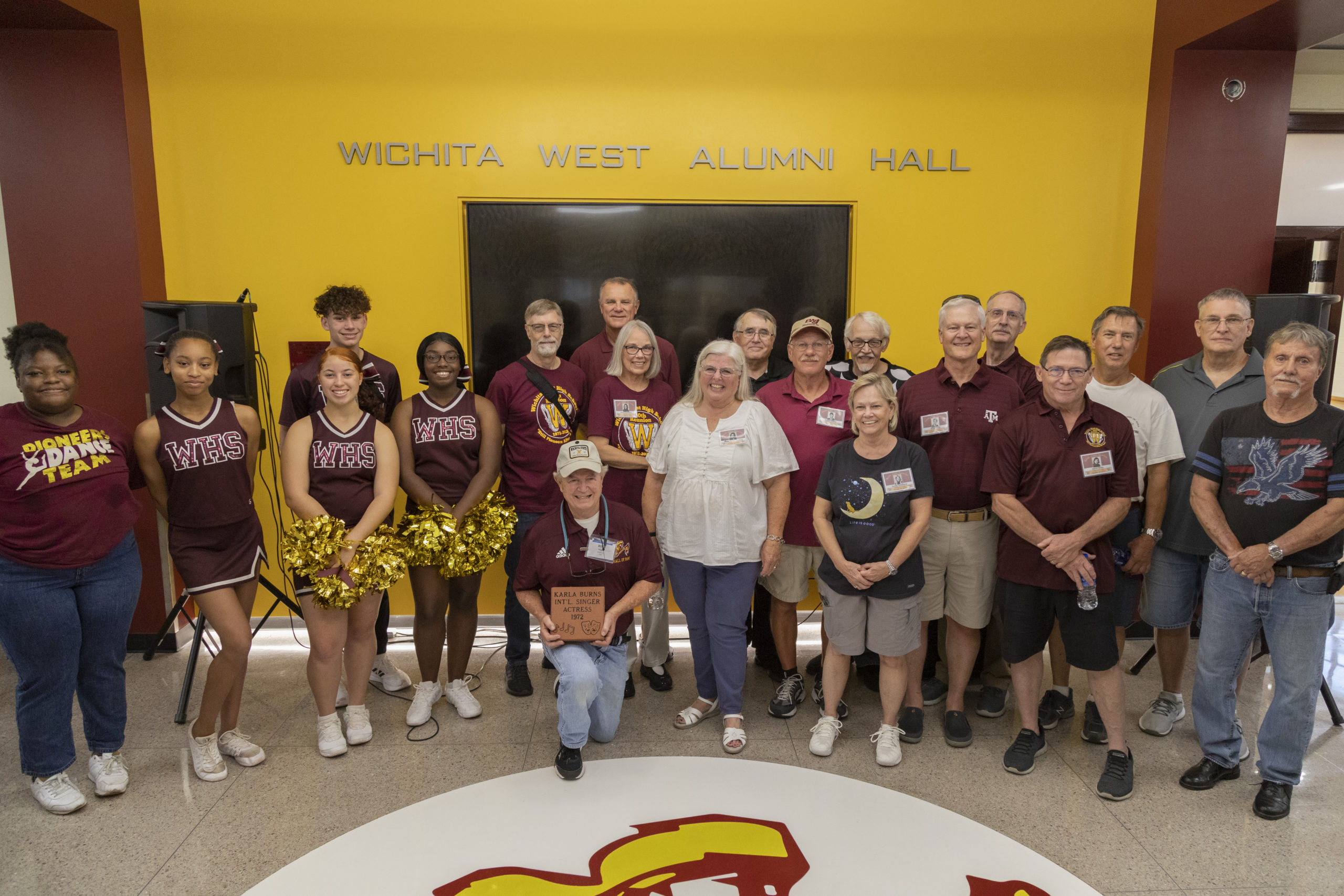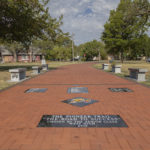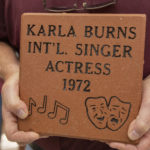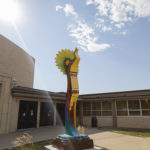Bill Reagan’s years at West High School were some of the best of his life.
“All I remember are positives,” said Reagan, a member of the Pioneer class of ’64. “The teachers were great.”
So when Reagan learned that the school’s graduation rate was languishing behind other Wichita schools, he decided to do something about it.
A few short years later, Reagan and other alumni have helped the school raise its graduation rate to the highest it’s been in decades. They’re dedicated to reviving West’s once- proud athletic tradition as well.
“It’s a huge impact just because of our students being able to see, one, that our alumni are giving back, and two, that they have so much pride and passion for the school,” West principal Mark Jolliffe said. “And then third is that it’s improving our school through whether it’s paying for scholarships, facilities, advanced placement tests or dual credit classes. It’s just giving opportunities back to the kids.”
David Clark, who is West’s athletic director and unofficial alumni liaison, agrees.
“The kids here need to see our alumni active and engaged,” Clark said. “Often times for our kids, a little bit of positive energy is all they need.”
The efforts began when Reagan went to West to talk to its former principal, Joel Hudson, about holding an event there as part of his class reunion. Hudson had already overseen improvements in the graduation rate, which had fallen below 60 percent in the early 2000s, but West was still at or near the bottom compared to other schools.
“We got to talking about what we could do to help out the school,” Reagan said. “Money was mentioned.”
Reagan and Ike Goodvin, a member of West’s first graduating class in 1955 who lives in Georgia but returns to Wichita frequently, landed on an idea that’s been used by many other schools and institutions — selling commemorative bricks to raise money. The bricks would replace an existing sidewalk leading to the school’s main entrance at Dayton and Osage streets.
At the principal’s suggestion, members of the class of 2018 named the sidewalk. They called it “Pioneer Trail: The Road to Success.”
“It turned out to be pretty as well as functional,” Reagan said of the curved walkway, which is 14 feet wide and 170 feet long. “I’m quite proud of it.”
A 4-by-8-inch brick costs $60 and an 8-by-8-inch brick is $120. So far, over $60,000 has been raised and given to the school through the sale of bricks, and Reagan said there’s room to sell about 10,000 more. Donors are allowed latitude in what they have etched on the bricks, which in addition to names and years carry illustrations of cheerleading uniforms, athletic gear, musical instruments, books and more. Reagan lays the bricks, periodically hoses them off and is their chief salesman at alumni get-togethers, most of which take place in the fall.
Reagan enjoys giving tours of the sidewalk, pointing here to bricks naming five members of the same family who attended West during the 1960s and there to one naming a class valedictorian whose family bought a brick after his death. Reagan, who grew up near the school, recognizes the names of many students who were known for their athletic, musical or academic prowess. Another brick names a former classmate now suffering from Alzheimer’s. Her family told Reagan that “all she talks about is her days at West.” A donor covered the cost of her brick.
Another donor, Hutchinson businessman Bill Mason, “called up and said ‘I want to donate a brick for everyone in my class,’” Reagan said. “I swallowed hard thinking, ‘I’m going to be laying bricks for a week.” Mason, class of ’56, died of COVID-19.
The most generous donor of all turned out to be a West grad with an unusual history at the school — J. Fred Cramm, who got kicked out of West during his senior year for rolling bowling balls borrowed from Seneca Bowl down the main corridor. Cramm returned to West the next year and graduated before going on to a successful business career in Houston.
“There are so many stories here,” Reagan said.
The money has been used for a variety of student needs. For instance, it bought a fiberglass replica of the Keeper of the Plains sculpture so that Native American student artist Carlotta Evans could paint it for her senior project. It helped fund a bus ride for 50 students to Dodge City for West’s first football game of this season. Last year, the alumni fund awarded two $1,000 college scholarships to seniors, who were also assigned alums as mentors. It’s bought caps and gowns for students, helped a student whose home burned and went toward other “benevolent” causes, Jolliffe said.
One year, it helped pay for computer-based tutoring for students who needed to make up credit hours to graduate. Of the 18 students who took part, 17 graduated. Reagan was invited to watch them receive their diplomas. “It was emotional,” he said.
Not long after launching the sidewalk project, Reagan got a call from Clark, who wanted to update the school’s Hall of Fame for athletics, which at that point consisted of plaques positioned so high up a wall outside the main gymnasium that they couldn’t be read. Clark and Reagan agreed that West also needed a space dedicated to alumni who’d excelled in areas other than sports. Thus was born the Hall of Distinguished Alumni, named in honor of Cramm for his financial support. The hall will induct its first members next spring, including singer and actress Karla Burns, who died last year, former longtime mayor Bob Knight (class of ’59), Cramm, businessmen John McKay and others.
Combined into the Wichita West Alumni Hall, the sports and distinguished alumni halls now occupy the corridor outside the old gymnasium, which is now used for PE classes and junior varsity sports. In addition to plaques, there are touch-screen displays where visitors can bring up photographs and other information about individual members, teams and more, plus a strikingly lit inlay of the Pioneer logo (its original rifle replaced by a flag pole) on the polished floor.
The Alumni Hall is designed to be more than just an exercise in nostalgia. “We want the kids to know that a lot of folks have passed through these halls and have gone on to great success,” said Reagan, a Wichita State University grad who worked for USD 259 and two law firms before retiring. “We were trying to inspire the kids.”
To help turn the Alumni Hall into a gathering place for former students, members of the class of ’72 bought and assembled 60 chairs, five round tables, 24 bar chairs and 12 bar tables that can be stored in the gym’s old concession stand when not needed, plus six benches for students “so they don’t feel like they’ve been left out,” said Lindsy Hood, a ’72 grad.
Hood, who has fond memories of drama club plays at West, said she hadn’t been heavily involved in alumni activities through the years but was inspired by Reagan and others.
“West has struggled,” she said. “They’ve got kids who are in considerable poverty. They just need help staying in school, help when they’re out of school. I’m hoping it will make a difference.”
Principal Jolliffe said it already has. After reaching 72 percent under Hudson, the graduation rate climbed to 75 percent during Jolliffe’s first two years and could reach 80 percent this year.
“It’s just that ‘it takes a village’ idea to get kids across the finish line,” Jolliffe said. “I think it helps (alumni), too, being around young kids and seeing that there are great kids out there.”
Contact Joe Stumpe at joe@theactiveage.com.











